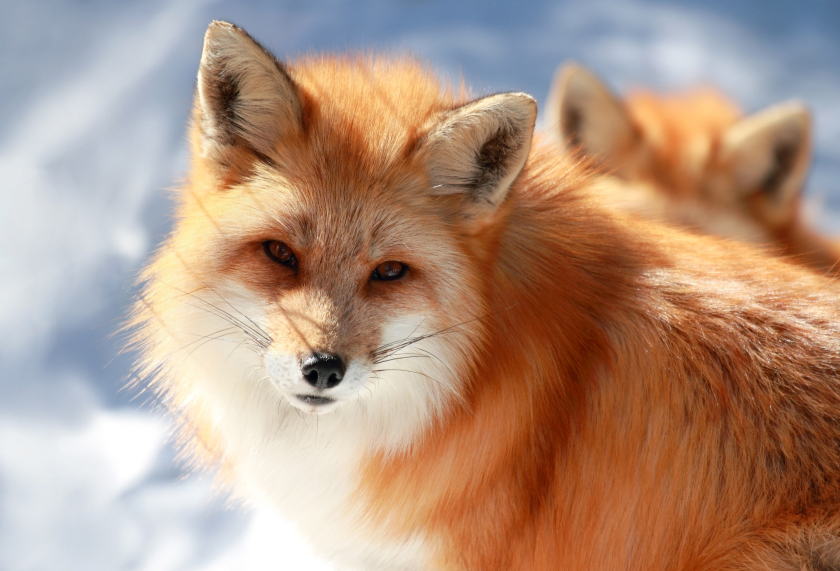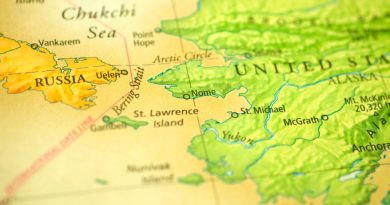Red foxes conquering Alaska’s North Slope: study

Red foxes, which began showing up in the Prudhoe Bay area in the late 1980s, are gradually conquering Alaska’s North Slope and humans are inadvertently aiding the invasion, a newly published study has found.
Garbage left by people at the North Slope oil fields has become a mainstay of the red foxes’ diet, allowing the animals to spread over the tundra and displace the smaller arctic foxes, according to the study led by University of Alaska Fairbanks researcher Garrett Savory.
While arctic foxes also dine on human-left garbage, their dependence is not as heavy as that of the newcomers, said the study, published online in the Canadian Journal of Zoology.
Two-year study
Savory, who used the project as the thesis for his newly earned UAF master’s degree, monitored red and arctic foxes over two years. He scouted sites they used. He and his colleagues set up traps and took blood and hair samples from foxes that were captured, then set free. They examined scat. They studied bones and tissues of donated fox carcasses.
What they found was that summer diets for both red and arctic foxes were almost entirely from natural sources — mostly lemmings for red foxes and a more varied diet of lemmings, eggs and voles for arctic foxes — but that food left by people was important to winter diets.
In late winter, red foxes relied on human sources — generally trash — for about half the food they ate, according to the findings. Arctic foxes were a little less dependent on food from humans, but also made use of peoples’ discards, with an average 39 percent of their late-winter diet coming from human-produced food, the study found.
Chemistry distinguished the human food. The key ingredient in the human-food signature: corn. Corn syrup, corn sugars, corn starch and other traces of corn lingered from food sources left by people. Corn is ubiquitous in human diets, Savory pointed out, even in the meat served to North Slope oil-field workers, which comes from corn-fed livestock. “The anthropogenic food that we use, it stands out chemically,” he said.
Absent the food sources created by humans, the North Slope in its natural state is not good habitat for red foxes, Savory said. It is too soggy in the summer for their dens and, more important, provides too little for them to eat. “There’s just not enough food to sustain them year-round,” he said.
Effect on arctic foxes
Prior to peak oil production, red foxes rarely ventured north of the Brooks Range, Savory said. They were first documented in the North Slope oil field area in 1988, according to his study. But in the 1990s, the bigger and stronger red foxes started taking over dens used by arctic foxes, a trend that has intensified since then, his study said.
“When arctic and red foxes are put in the same area, the red fox will outright dominate the arctic fox,” Savory said.
Sometimes the domination is vicious. Scientists have documented instances of red foxes killing arctic fox kits — for example, one case in Russia’s Yamal Peninsula, discussed in a 2011 study published in the journal Polar Biology. A 2004 Prudhoe Bay incident in which a red fox killed an arctic fox was videotaped and discussed in an article published in 2006 in the journal Arctic.
Elsewhere in the circumpolar north, the red foxes’ territory grab has imperiled survival of arctic foxes. While arctic foxes remain abundant in North America, numbers are at “critically low levels” in parts of Scandinavia, according to the International Union for the Conservation of Nature. Some scientists attribute the arctic fox problems to a warming climate; the transformation of boreal forests has made some territory friendlier to red foxes and more difficult for arctic foxes, the IUCN points out.
Others, including scientists who studied foxes in Norway’s Borgefjell National Park, have cited to the northward spread of human and industrial development – and human-generated garbage – as a factor contributing to the arctic fox’s woes.
Could disrupt natural food supplies
As of yet, Alaska’s arctic foxes are not in such bad shape. But there are ominous signs, Savory said. Red foxes, with their voracious appetites, could disrupt natural food supplies. There are already signs that the normal lemming population cycles have been disrupted, he said. And seal meat scraps left by polar bears on the sea ice, normally part of the arctic fox diet, will be less available as summer sea ice becomes scarce, he said.
As oil development spreads over the North Slope, developers should do a better job separating foxes from trash, Savory said.
Though there are rules mandating proper garbage management and banning feeding of wild animals, gaps are obvious – sometimes literally.
Foxes are able to wriggle through openings, for example, between fences and ground, said Savory, who once counted seven foxes feeding at the same time at a landfill. Foxes are able to get into trash containers stored outdoors, suggesting that indoor storage would be a better idea, he said.
And despite the rules, some oil workers may be feeding foxes, he said. He cited one encounter he had during his research at an oil-field gravel pad. “All of a sudden a red fox comes up to the truck, sits down beside me at the window and yelps at me like a dog begging for scraps,” he said.
Still unclear is the reason for the relative dearth of red foxes in Barrow, a place with plenty of human-created garbage, Savory said. A “plausible” explanation is ease of travel to the oil-field area, he said. To reach Prudhoe Bay, red foxes can use two transportation corridors – the Sagavanirktok River and the Dalton Highway. The highway might be an attractive route because of handouts, deliberate or not, from truckers, and gut piles left along the way by hunters. Barrow is a tougher destination for the red foxes, but the animals might go there, too. “We may see red foxes become more prevalent in the not-too-distant future,” he said.
Red foxes did venture to Barrow long ago. In the late 1920s, when reindeer herding was at its peak in the Barrow area, the influx of red foxes was noticeable, as was the absence of arctic foxes, according to Savory’s study. Red foxes were likely able to feast on gut piles left by herders, Savory said. But after the reindeer business collapsed in the mid-20th century, the red foxes disappeared from the Barrow area, he said.
Related stories from around the Arctic:
Canada: More Grizzlies and wolves moving north to High Arctic, Radio Canada International
Finland: Bear hunters’ haul in Finland down by nearly half, Yle News
Sweden: Problem wolf returns to North Sweden, Radio Sweden
United States: Snakes in the North: costly for one young Alaskan — and the government, Alaska Dispatch



